cute cat heart pentant 3D print model
The 3D model of the cat should be cute, with soft, rounded features to convey warmth and playfulness. The cat’s body has a chubby, plush look, sculpted with smooth, flowing lines to minimize overhangs or complex geometries that could be challenging for 3D printing. The fur texture is subtle but noticeable, with slight ridges and soft curves to show the fluffiness without adding unnecessary detail that could complicate printing.
The cat’s face is expressive with large eyes and a small, button-like nose. The whiskers and small mouth are delicately modeled, with enough space between them to ensure clean prints. Its ears are slightly perked, and the paws are small and detailed with soft pads, all carefully designed to be robust for printing.
Around the cat’s neck is a simple yet elegant heart-shaped pendant, molded with smooth, clean edges to ensure it prints correctly. The heart pendant is connected by a thin, simple ribbon or collar, avoiding tiny, fragile parts that might break during printing. The pendant could be slightly raised from the cat's neck to create a 3D effect, and designed to be robust enough for printing without losing the heart shape’s detail.
Printing Considerations:Support-Free Design: To make it easier for 3D printing, the model should avoid steep overhangs. The cat’s pose should be simple, possibly sitting or standing, with its tail curled around its body to support the overall structure during printing.Material Choice: Depending on the material (like PLA or resin), the model can have different finishes. For example, PLA can be used for matte finishes, while resin printing can provide a smoother, glossy texture for the fur and heart pendant.Scale and Detail: The model should be scaled appropriately for printing. Fine details, like the eyes, nose, and heart pendant, should be large enough for the printer to capture them without sacrificing resolution. It may be best to print at a resolution of around 0.1mm for fine details.Assembly or One-Piece Model: To avoid the complexity of assembly, the model can be designed as a single piece, ensuring the pendant and cat’s body are fused seamlessly. However, for a more customizable design, the pendant could be printed separately and attached afterward.Post-Processing: After printing, you can add a bit of paint or gloss to the pendant to make it stand out more. The pendant could be painted in metallic or pastel colors, while the cat could be in a soft, pastel shade (light gray, white, or cream).










